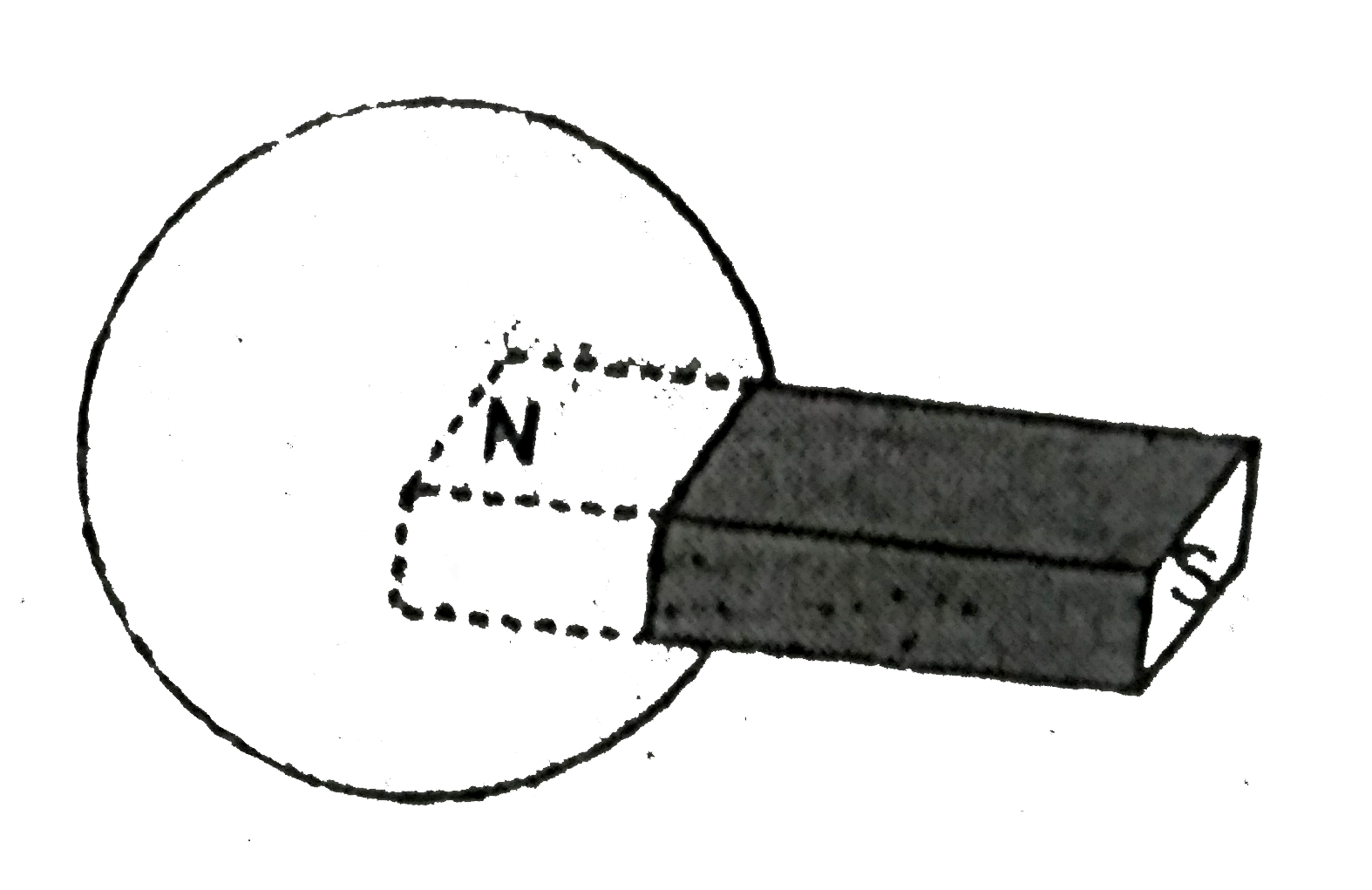Magnetic lines form continuous closed loop. Why ?
Step-by-Step Text Solution
1. Understanding Magnetic Field Lines: Magnetic field lines represent the direction and strength of a magnetic field. They are visualized as lines that emerge from the North Pole of a magnet and enter the South Pole.
2. Direction of Magnetic Field Lines: Outside a magnet, the magnetic field lines travel from the North Pole to the South Pole. Inside the magnet, they travel from the South Pole back to the North Pole, thus forming a closed loop.
3. Nature of Magnetic Poles: A key characteristic of magnets is that they always have both a North Pole and a South Pole. Magnetic poles occur in pairs; it is impossible to have a magnetic monopole (a single North or South Pole) in isolation.
4. Dividing a Magnet: If you cut a magnet into smaller pieces, each piece will still have its own North and South Pole. This demonstrates that magnetic poles cannot exist independently; they always come in pairs.
5. Conclusion on Magnetic Lines: Because magnetic poles always occur in pairs and because the field lines connect these poles, the magnetic field lines must form continuous and closed loops. This property holds true regardless of the size of the magnet.
Topper's Solved these Questions
- MAGNETIC EFFECTS OF CURRENT Book:VMC MODULES ENGLISHChapter:MAGNETIC EFFECTS OF CURRENT Exercise:LEVEL 0 ( SHORT ANSWER TYPE-II )
Explore 13 Videos
- MAGNETIC EFFECTS OF CURRENT Book:VMC MODULES ENGLISHChapter:MAGNETIC EFFECTS OF CURRENT Exercise:LEVEL 0 (LONG ANSWER TYPE )
Explore 3 Videos
- MAGNETIC EFFECTS OF CURRENT Book:VMC MODULES ENGLISHChapter:MAGNETIC EFFECTS OF CURRENT Exercise:JEE Advanced (Archive)
Explore 78 Videos
- LIQUIDSBook:VMC MODULES ENGLISHChapter:LIQUIDSExercise:JEE ADVANCED (LEVEL -2)
Explore 55 Videos
- MOCK TEST 1Book:VMC MODULES ENGLISHChapter:MOCK TEST 1Exercise:PART I : PHYSICS (SECTION-2)
Explore 10 Videos
Similar Questions
Knowledge Check
Statement-1 The net magnetic flux through a spherical surface enclosing north pole of a bar magnet as zero

Statement-2 Magnetic field lines always form closed loopsAIf both assertion and reason are true and reason is the correct explanation of assertion.BIf both assertion and reason are true but reason is the correct explanation of assertion.CIf assertion is true but reason is falseDIf both assertion and reason are false.Statement-1 The net magnetic flux through a spherical surface enclosing north pole of a bar magnet as zero

Statement-2 Magnetic field lines always form closed loopsAIf both assertion and reason are true and reason is the correct explanation of assertion.BIf both assertion and reason are true but reason is the correct explanation of assertion.CIf assertion is true but reason is falseDIf both assertion and reason are false.
STATEMENT-1 : Magnetic poles are only mathematical assumptions and have no real existence .
and
STATEMENT-2 : Magnetic field lines are always in closed loops .
View SolutionA: When currents vary with time, Newton's third law is valid only if momentum carried by the electromagnetic field is taken into account.
R: Magnetic field lines always form closed loops.
View SolutionStatement-1 The net magnetic flux through a spherical surface enclosing north pole of a bar magnet as zero

Statement-2 Magnetic field lines always form closed loops
View SolutionAs a result of change in the magnetic flux linked to the closed loop shown in the fig, an e.m.f. V volt is induced in the loop. The work done (joule) in taking a charge Q coulomb once along the loop is

View SolutionWhy do the electrostatic field lines not form closed loops ?
View SolutionWhy do the electrostatic field lines not form closed loop?
View Solution

